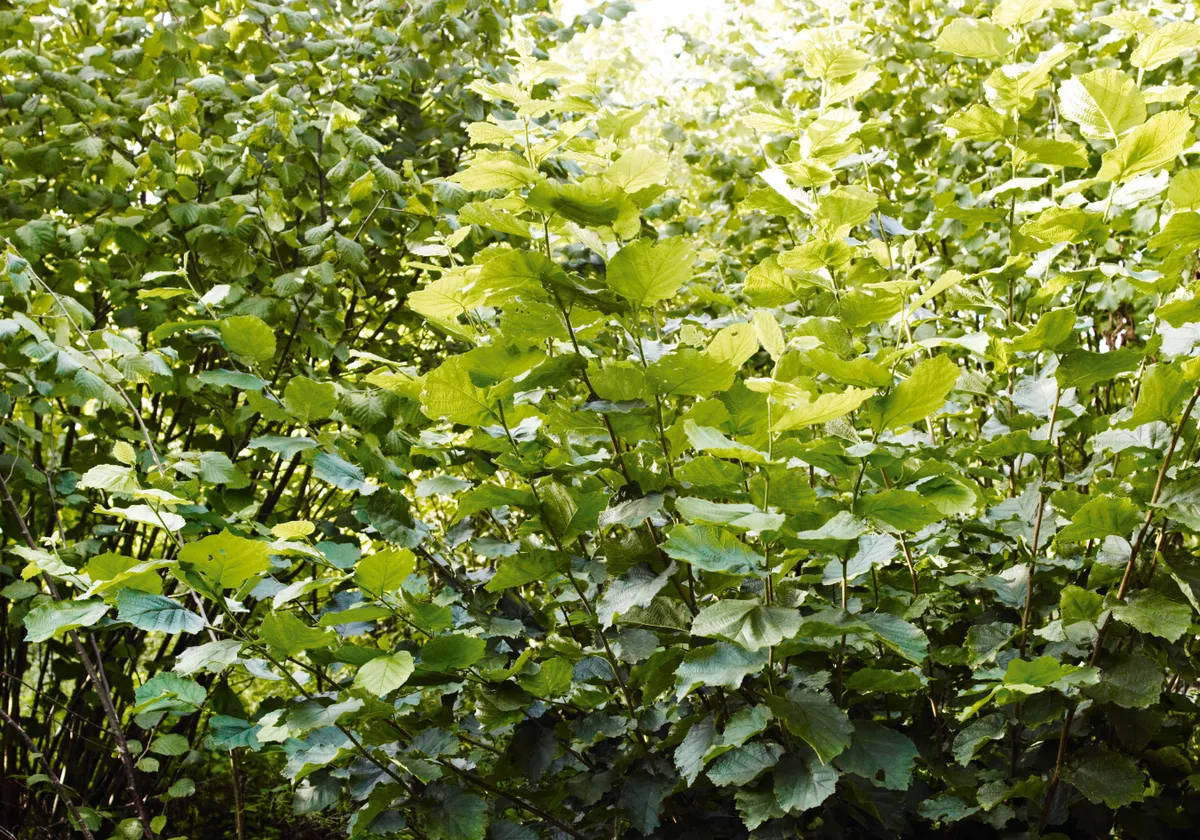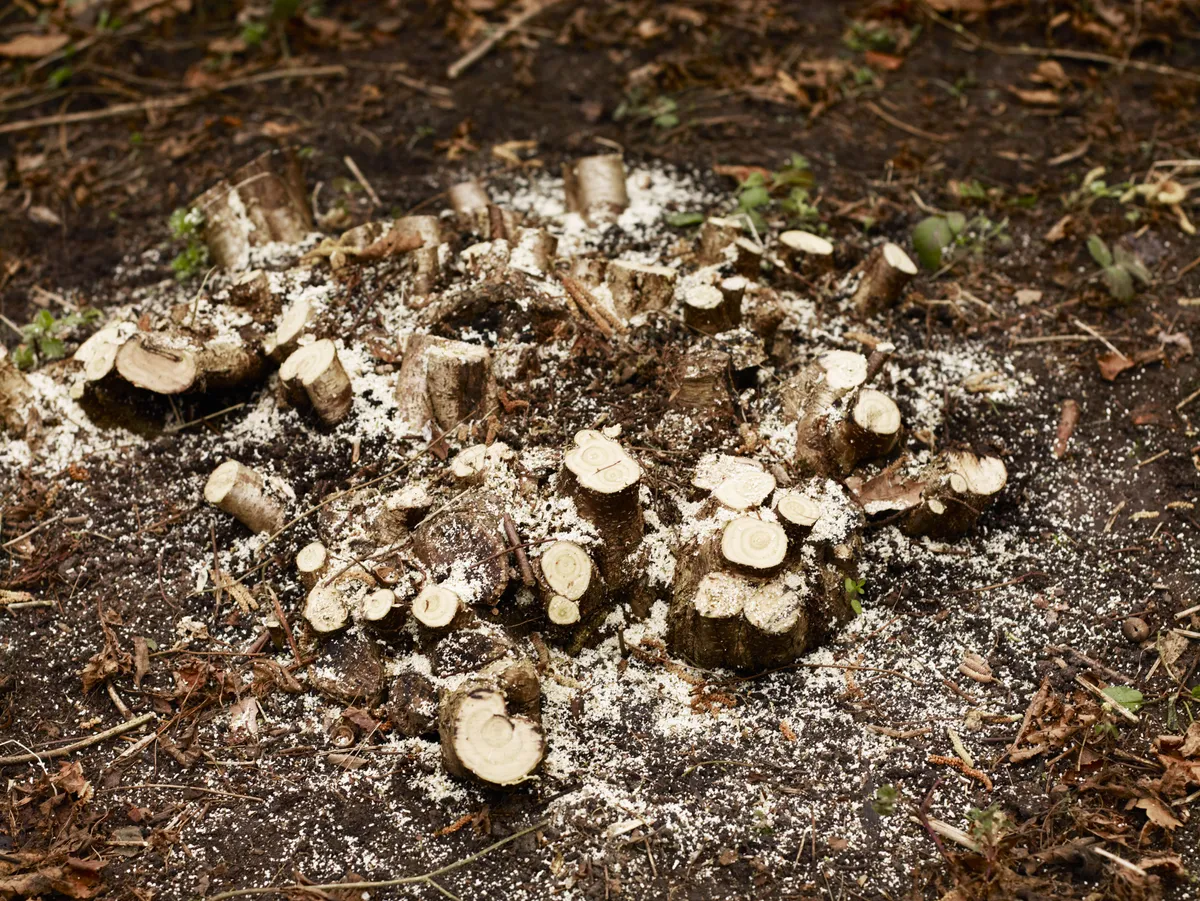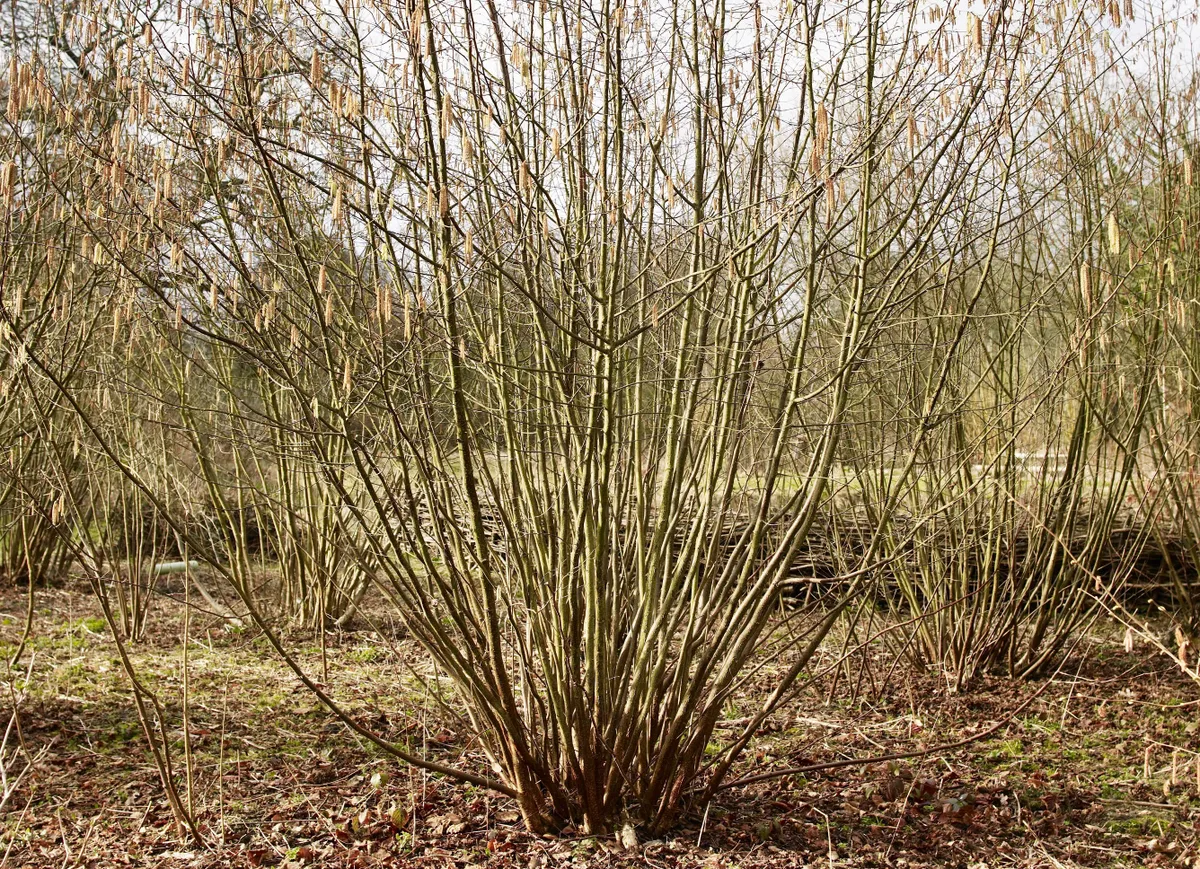Coppiced hazel (Corylus avellana) has been valued for centuries for the long, straight stems that grow in response to a hard prune. Today, with local or home-grown products increasingly popular, these provide perfect plant supports for beans and other herbaceous climbers in place of imported bamboo, as well as being used for fencing hurdles.
Coppiced hazels have a broad, open habit, with branches carrying leaves in airy, horizontal layers. They also look beautifully ornamental in spring with long male catkins on the bare stems.
How to plant: Coppiced hazels look good in groups of three or five, if you have room, and this will give you a rotation that works both from a practical and an ornamental point of view. If you grow vegetables, alternating the coppicing of the individual plants would allow you to be self-sufficient in pea sticks and poles. Hazel is also a good choice to include in a natural, woodland inspired planting scheme, complementing lower-growing spring bulbs and ferns.
When to cut: Cutting back can wait until late spring, after the catkins have dropped. For best results and more robust stems, coppicing on a rotation of at least every 5-10 years is recommended, as this gives the roots a chance to establish.
When tackling a hazel, remove branches in stages. Take out the outer stems first and work your way into the centre of the stool.
It’s easier to get a good clean stool once you have cut stems down to around 30cm. The end result should be no more than 5cm above the ground.
Read our article on why you should coppice.
The stages
1
Summer: leafy stems

This hazel has previously been coppiced, so instead of growing into a single-stemmed tree it has lots of bushy stems. A lot of energy goes into new growth; coppicing every three to five years allows the plants to recover.
2
Late winter or spring: cutback

Use a sharp saw to cut the larger branches to ensure a clean cut. Remaining stems, or the stool, should be no more than 5cm from the ground.
3
Winter, five years on

After five years, your coppiced hazel should look like this. It’s about 3m tall and 3m wide, with lots of stems bearing pretty catkins. Now it’s time to cut it back again, before the stems thicken.